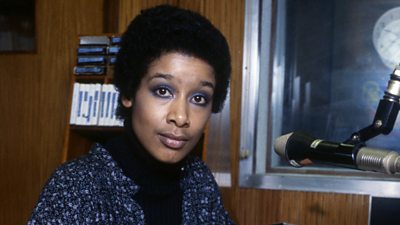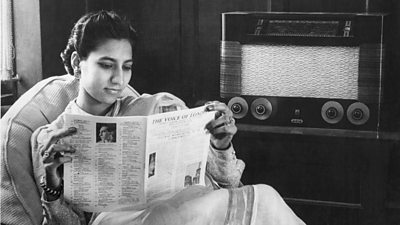Our responsibility is to carry into the greatest possible number of homes everything that is best.
WARNING: Some scenes in this video may be upsetting. They reflect the time when made.
����tv has universality at its core, but has it addressed all socio-demographic groups equally? Or has it - with its patrician tone, lofty ideals and RP () vowels - pitched itself too overtly at the middle classes?
Early ����tv radio programmes of the 1920s set up a high ideal for broadcasting and reflected the post-World War One society of the time, determined to create a better world but still bound by a rigid class system.
Enter Wilfred Pickles
One of the first notes of change was the famous appointment of Wilfred Pickles as the first non-RP voice on the ����tv airwaves. A Yorkshireman and the son of a builder, Pickles began his career as a regional announcer before moving to the national radio in the 1940s, and then onto his own hugely popular radio and television show.
Pickles was part of a general opening up of the ����tv’s airwaves during World War Two to a broader range of voices, and especially to working class stories, humour and music. The hugely popular comedy of Gert and Daisy (real-life sisters Doris and Elsie Waters) featured throughout the 1940s on Workers Playtime and in the shop-based radio comedy Floggits. Meanwhile, East Ham girl Vera Lynn, who became the Forces' Sweetheart, had her own hugely popular show Sincerely Yours (1941).
In Focus...
-
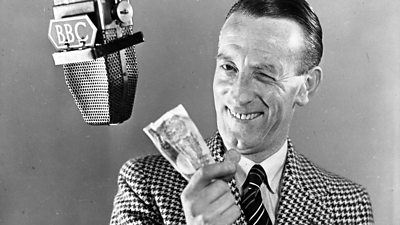
Wilfred Pickles
First regional accented announcer -
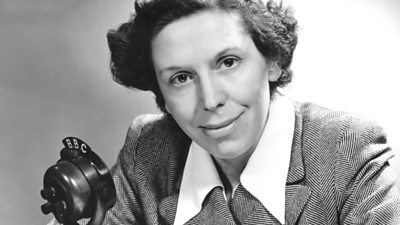
Olive Shapley
Giving voice to 'real' people -

Stacey Dooley
Bringing diversity of thought
Early documentaries of the 1930s found a place for these working class stories too, via the pioneering radio programmes of Olive Shapley. She travelled round the country, determined to give unheard voices a platform, simply saying: “I felt the ����tv should be doing something about this.”
Changing society
Things were changing in society at large. The Butler Education Act 1944 made education mandatory for everyone up to the age of 15. It created a new stream of educated working class men and women attracted to the new medium of TV, including the likes of Melvyn Bragg and Joan Bakewell.
There were vivid changes in drama too – especially in the socially rooted dramas of the Wednesday Play (1964) and Play for Today (1970), written by and directed by many working class figures who would go on to have long TV and film careers. They included Ken Loach, Alan Bleasdale, Willie Russell, Dennis Potter and Barry Hines. Their dramas put a spotlight on working class lives, perhaps most memorably in Cathy Come ����tv (1966), which created the campaigning agency for the homeless, Crisis.
One of the Wednesday Play actors, Tony Holland, would later go on to co-create (with Julia Smith) the hugely successful ����tv soap EastEnders, in 1985. Designed to compete with Granada TV’s Coronation Street, half of the key characters of the original EastEnders were famously based on Holland’s own family members, bringing a new range of authentic working class voices to the drama serial formula.
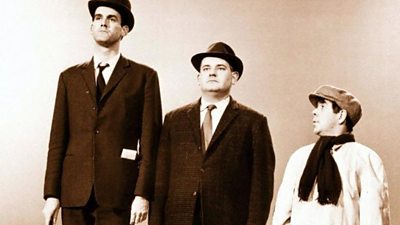
Comedy and Children’s
Comedy had a gear change in this period too. The sitcom moved away from its middle class milieu to the rag and bone shop of Steptoe & Son (1962) and Johnny Speight’s iconoclastic Till Death Us Do Part (1965), which gave Warren Mitchell the role of his career as the foul-mouthed Alf Garnett.
But the British obsession with class was never so memorably captured as in the classic Two Ronnies sketch of 1966, which used the extreme height of John Cleese to epitomise upper class superiority, set against diminutive Ronnie Corbett as working class humility with a crick in his neck, while Ronnie Barker is stuck in the middle…
By the 70s, children’s programmes also shifted socio-demographic portrayal. Tea-time drama became edgier in the comprehensive secondary school Grange Hill (1978); while the ����tv’s educational output would launch major campaigns around literacy and computer skills. A decade or so before that the ground-breaking Open University (1969) also opened up degree-level education to all for the first time ever.
News and Documentaries
Then in 1974 the first ‘fly-on-the-wall’ TV documentary, The Family, captured the life of a working class family by simply filming their daily lives without direct interviews. For 1970s England, it controversially highlighted issues around class, race and manners.
General news reporting through the 80s and 90s was still, however, dominated by the classic ����tv voice. When Liz Forgan was running ����tv Radio in the mid-90s, she made her much misunderstood announcement about wanting different accents on the ����tv including ‘lovely Brummie’. Radio 4 listeners were not happy.

The last decade has seen broader socio-economic representation in front of and behind the camera/microphone, with presenters such as Stacey Dooley reinventing the look and feel of the ����tv documentary.
Today, the ����tv continues its efforts to open up access for employment to a more socially diverse range of people through projects such as and , alongside new apprenticeship schemes.
The vision for the future is for a ����tv that is more reflective of society, across its staff and its output.





